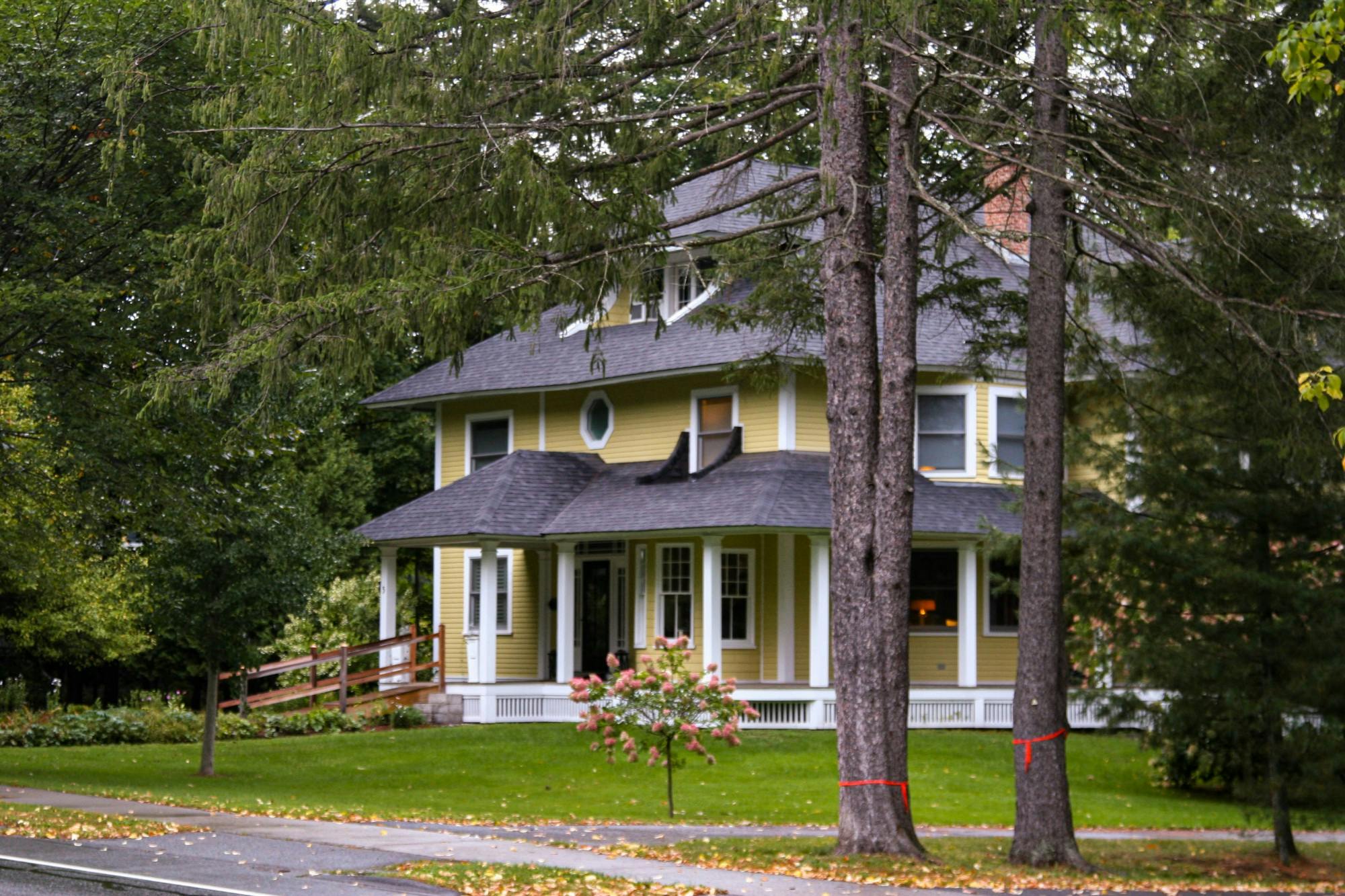A report published in October by St. Anselm College’s Center for Ethics in Society and the Josiah Bartlett Center for Public Policy, a New Hampshire-based free market think tank, found a correlation between zoning regulations and the cost of housing across New Hampshire. In particular, the Upper Valley is among the areas with the highest housing prices and most stringent zoning restrictions, according to the report.
The report also identified towns along the Massachusetts border, the Seacoast and some ski towns located near the White Mountains and Lake Sunapee as the most highly regulated areas in the state.
Hanover’s excess housing price, a measure of how expensive homes are relative to the average price in the state, was the fifth highest in New Hampshire, behind only four municipalities along the Seacoast.
Furthermore, the study noted that Hanover has some of the strictest zoning regulations in the state, including a zoning code that prohibits housing on half its land, requires a minimum of 10-acre lot sizes for much of the remaining land, and does not allow for exceptions. Hanover was one of the earliest municipalities to adopt zoning policies after being authorized to do so by a 1926 statute.
Jason Sorens, who authored the study and is a professor and director of the Center for Ethics and Society at Saint Anselm College, said that zoning restrictions are a form of “rent-seeking” behavior — meaning that homeowners can artificially inflate the value of their homes by limiting the supply of new housing.
According to Sorens, New Hampshire’s housing patterns are in line with national trends.
“The relationship between housing supply regulation and cost of living over all 50 states is extremely strong and positive,” Sorens wrote. “As we have seen, there are good reasons to believe that a causal effect of regulation on prices is responsible for this relationship, implying that by reducing zoning restrictions, New Hampshire could substantially cut the cost of living for thousands of families.”
Director of Hanover’s planning, zoning and codes department Robert Houseman said that the “broad brush” report directly compared Hanover and other high-demand municipalities to small towns without any housing regulations, where communities face a lack of employment opportunities and infrastructure.
“A comprehensive analysis … [would] tease out how the amenities within the community, the employment opportunities within the community [and] the school system’s value in the community drive costs," he said.
Furthermore, Houseman said that Hanover’s development is limited by the town’s geographic features.
“[The report] didn’t take into consideration the Appalachian Trail and the land on Moose Mountain and the steep slopes,” Houseman said. “One half of the town is not reachable from downtown; you literally have to leave the town to get to the other side. So the ability to develop that land in any reasonable way is a challenge.”
However, Lebanon planning and development director David Brooks said that conclusions of the study seem consistent with his work.
“Whether somebody can only build one house, or whether they could build 10 housing units, certainly affects the cost of each of those units in the long run,” Brooks said.
The report indicated that Lebanon has lower housing costs and fewer housing restrictions than Hanover. Brooks said that over the past decade, Lebanon has approved zoning changes such as allowing residential construction in non-residential zones and removing height limits and density restrictions in some districts.
According to Brooks, the city has received applications for additional housing construction and approved “close to 1500” units in the last few years.
While the study focused chiefly on pre-pandemic data, the Upper Valley’s housing crisis has been further exacerbated by pandemic demand, according to Thetford, Vermont planning commission chair David Forbes.
“The ability to work from home, rather than from a brick and mortar office, enabled people to have a freedom to be able to move to places that were less congested and that were considered safe,” he said. “That in turn brought additional pressure into the housing market, of course, because they’re coming up here looking for places to live, and when you have a multitude of folks who are bidding on a particular property, it’s really a seller’s market at that point: Prices go up and up and up, depending on who can afford to pay the asking price.”
Municipalities, however, face challenges in developing land quickly enough to keep up with rising demand for housing.
In downtown Lebanon, pushback from local residents led to a 40% reduction in the number of housing units built in a project on Bank Street, according to Brooks.
“26 units downtown is still pretty good. But we need more than that,” Brooks said.
While municipalities can work to encourage development from private companies and nonprofits, they lack the funds to be developers, according to Houseman.
“We just kicked off our master planning effort in Hanover, which will be the foundation for an update of our land use regulations,” he said. “One of the central themes that we’ve heard through this process is the housing shortage. We then as professionals look at how and where we can encourage private sector investment and development of housing.”
Forbes said that financial support from the federal government is critical to allow smaller towns to build more housing.
“That’s why the [federal bipartisan] infrastructure bill… is so important to areas like [ours], because it simply isn’t feasible for a town like Thetford on its own to go solo and try to finance that sort of affordable workforce housing,” he said.
Correction appended (12:05 p.m., Oct. 26, 2021): A previous version of this article contained the wrong photo. The photo has been updated.




